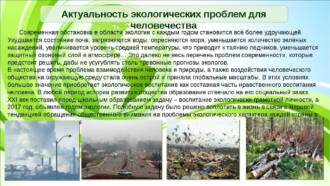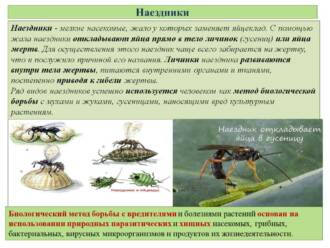
Butterflies are not only beautiful and delicate creatures, but also important components of the ecosystem. They perform a number of important functions such as plant pollination and participation in food chains. However, in order for butterflies to fulfill their role, they need specific conditions to survive.
One of the important factors for butterflies is the presence of a certain habitat. Each species of butterfly has its own preferences regarding the type of vegetation, the presence of water bodies and other environmental factors. For example, some species prefer open spaces where there is plenty of sunlight, while others prefer shady places. Habitat change can lead to the extinction of certain species of butterflies.
Another important aspect for butterflies is the availability of certain plants that are their food source. Many butterfly species rely on certain types of plants for their survival, both as food for their caterpillars and for pollination. Habitat destruction and extinction of these plants can lead to extinction of butterflies.
Conservation of habitats for butterflies is an important task in terms of biodiversity and the health of the ecosystem as a whole. This requires taking into account the needs of various species of butterflies and taking measures aimed at the conservation and restoration of their habitats.
Ultimately, conservation of habitats for butterflies is an integral part of the conservation of nature in general. This requires a collaborative effort on the part of academic researchers, government agencies and the public. Only by conserving and protecting the habitats of butterflies can we ensure their survival and the conservation of the biodiversity of our planet.
The Importance of Conserving Butterfly Habitats

Butterflies are some of the most beautiful creatures on the planet, and their conservation is an important task. However, many people do not realize how important it is to preserve habitats for these delicate creatures.
Butterflies depend on certain conditions for their survival. They require certain plants which are their source of food and a place to lay their eggs. In addition, butterflies need a variety of vegetation in order to have access to various types of food and shelter from predators.
One of the main reasons why it is important to preserve habitats for butterflies has to do with their role in the ecosystem. Butterflies are important plant pollinators. They carry pollen from one plant to another, contributing to its pollination and reproduction. Without butterflies, many plants will not be able to reproduce and their populations will decline.
In addition, butterflies serve as food for other animals such as birds and frogs. They are an important link in the food chain and maintain biological balance. If habitats for butterflies are destroyed, it can lead to ecosystem disruption and threaten the survival of other species.
Thus, the conservation of habitats for butterflies is essential to maintain biodiversity and the ecosystem. This requires the conservation and restoration of their natural habitats, as well as the creation of special protected areas where butterflies can live and breed without human intervention.
Why butterflies need specific conditions to survive

Butterflies are winged insects that live in a variety of habitats, from forests and meadows to gardens and parks. However, they require specific conditions to survive, which can be disrupted by human activities.
Plant based nutrition
Most butterfly species feed on plants at some point in their life cycle. An excess of pesticides and herbicides that are used in agriculture can lead to poisoning and death of butterflies. In addition, deforestation and destruction of weeds leads to a decrease in the amount of plant resources available for feeding butterflies.
breeding sites
Butterflies have specific requirements for breeding sites. Some species lay their eggs only on certain plants, which are the main food source for their caterpillars. Habitat change, for example due to development or ecosystem collapse, can lead to the loss of suitable breeding sites and a decrease in butterfly populations.
Climatic conditions
Butterflies are sensitive to climate change. Global warming and changing seasonal weather patterns can affect their life cycle, migration and food availability. Some species of butterflies are already reducing their range due to adverse climatic conditions, which may lead to their extinction.
In general, conservation of specific habitats for butterflies is essential to ensure their survival. This requires addressing man-made threats such as pollution, destruction of natural habitats and climate change.
Biodiversity and Ecosystem

Biodiversity is one of the key components of an ecosystem and is essential for maintaining the balance in nature. The ecosystem is shaped by the interaction of different types of living organisms, including butterflies, which play a special role in maintaining this balance.
Butterflies perform several important functions in an ecosystem. First, they are pollinators of many plants. When visiting flowers, they carry pollen from one flower to another, facilitating the pollination process and ensuring plant reproduction. Secondly, butterflies are food for many predatory animals such as birds and bats. Their presence in the ecosystem maintains the food chain and biological balance.
Butterflies require specific habitat conditions to survive. They depend on the presence of certain types of plants on which the larvae feed, and flowers on which they can get food for adult butterflies. Also an important factor is the presence of hiding places, such as trees, shrubs or grass, where butterflies can find protection from predators and adverse weather conditions.
The role of butterflies in plant pollination

Butterflies play an important role in plant pollination, being one of the main pollinators in many ecosystems. They carry pollen from one flower to another, facilitating the pollination process and allowing plants to reproduce.
Pollination of plants by butterflies due to the peculiarities of their anatomy and behavior. Butterflies have long, flexible stigmas with which they reach the nectar in the flowers. At the same time, pollen can remain on the stigmas and legs of butterflies, which will be transferred to the next flower when the butterfly visits it in search of food.
Variety of plants and butterflies provides mutual benefit to both species. Butterflies find nutritious nectar in flowers, and plants are able to reproduce through the transfer of pollen. The variety of flower shapes and colors attracts different types of butterflies, which contributes to efficient pollination and plant diversity in the ecosystem.
The usefulness of butterflies in agriculture also not to be underestimated. In some regions, butterflies are the main pollinators of cultivated plants such as fruit trees and vegetables. The absence of butterflies or a decrease in their number can lead to a deterioration in the yield and a decrease in product quality.
Thus, the role of butterflies in plant pollination is undoubtedly important for maintaining biodiversity and sustainability of ecosystems. Preserving habitats for butterflies and creating conditions conducive to their reproduction and survival is essential to maintaining this important ecological link.
Interaction with other animals

Butterflies play an important role in the ecosystem and interact with other animals. They are a food source for many animals, including birds, lizards, and frogs. Butterflies are part of the food chain and their presence in a habitat maintains a balance in nature.
However, interactions with other animals can also be negative for butterflies. Some insects and parasites may prey on their eggs and caterpillars, which can lead to population decline. Also, some animals may feed on butterflies and use their bright colors as a danger signal.
Some species of butterflies also interact with other animals in a mutually beneficial relationship. For example, some butterflies interact with certain types of plants with which they form a symbiosis. Butterflies can pollinate flowers and carry pollen, which helps plants reproduce. In turn, the plants provide the butterflies with food and a place to breed.
Thus, the interaction of butterflies with other animals plays an important role in maintaining biological diversity and balance in nature. The conservation and maintenance of their habitats is essential to ensure the survival of not only the butterflies themselves, but also other species that depend on them.
Importance of butterflies in the food chain
Butterflies play an important role in the food chain as they are a food source for many other animals. They serve as food for birds, lizards, bats and some insects. Due to this, they are involved in the transfer of energy and nutrients through various levels of the food chain.
Butterflies also act as pollinators.. While visiting flowers, they fall on their pollen bodies, which they transfer from one flower to another. Thus, butterflies contribute to the pollination of plants, which is extremely important for their reproduction and conservation of species diversity. They carry pollen over long distances, which aids in the dispersal of plants and the biological value of ecosystems.
Some butterflies also defend themselves against predators. through various mechanisms. For example, they may mimic the appearance and behavior of venomous or dangerous species to scare away predators. Also, some butterflies can secrete special substances that scare away predators or lead to their poisoning. These defense mechanisms help butterflies increase their chances of survival and reproduction.
In general, butterflies are important contributors to ecosystems. and are of significant importance for the balance of natural processes. They are not only a source of food and pollinators, but also serve as indicators of the state of the environment. Changes in the number and species diversity of butterflies may indicate possible problems in the ecosystem and require measures to be taken to preserve and restore it.
Butterfly Habitat Threats
Butterfly habitats are vulnerable and subject to various threats. One of the main threats is the loss and destruction of natural habitats where butterflies live. As a result of the expansion of cities, the construction of roads, as well as deforestation, the habitual habitats for butterflies disappear. This leads to a reduction in populations and even the extinction of some species.
Changing of the climate also has a major impact on butterfly habitats. Rising temperatures, changing rainfall, and changing seasons affect the life cycles of butterflies, as well as the availability of food and plants for oviposition. Butterflies often depend on certain climate conditions, and changing these conditions can lead to a deterioration in their survival.
Use of pesticides and herbicides may also pose a threat to butterfly habitats. These chemicals can destroy their natural food sources and can also harm their bodies. Butterflies often feed on certain plants, and if these plants are treated with pesticides, then the butterflies can lose access to food and suffer from poisoning.
One of the major threats to butterfly habitats is destruction and loss of breeding and oviposition sites. Butterflies often depend on certain plants to lay their eggs, and if these plants disappear, then the butterflies lose their ability to reproduce and maintain a population.
Impact of invasive species may also be a threat to butterfly habitats. Some invasive plant or animal species may compete with their natural food sources or breeding sites. This can lead to a decrease in the availability of food and resources needed for the butterflies to survive and reproduce.
In general, conservation of butterfly habitats is essential for their survival and conservation of species diversity. Measures must be taken to protect and restore their habitats, as well as to reduce the impact of threats that could harm these vulnerable creatures.
Destruction of natural habitats
Destruction of natural habitats is a serious problem that negatively affects butterflies and their survival. One of the causes of habitat destruction is the expansion of agriculture and deforestation. This leads to the destruction of vegetation, which is the main food source for butterflies during the development of larvae and adults.
One of the consequences of habitat destruction is also the loss of biodiversity. Butterflies are an important part of the ecosystem, participating in the pollination of plants and serving as a food source for other animals. The destruction of their habitats can lead to an imbalance in nature and a deterioration in the living conditions of other organisms.
In addition, habitat destruction can lead to a decrease in the population of butterflies and their extinction in certain regions. When it becomes difficult for butterflies to find suitable conditions for reproduction and survival, their numbers decline. This threatens not only the butterflies themselves, but the ecosystem as a whole, since they perform important functions in natural processes.
It is important to understand that the conservation of habitats for butterflies is of great importance for their survival and the conservation of biodiversity. It is necessary to take measures to protect natural areas, reserves and national parks, where butterflies can find suitable conditions for reproduction and life. It is also important to carry out educational work and outreach to raise public awareness of the importance of conservation of habitats for butterflies and the natural environment in general.
Climate change and butterflies
Climate change is having a major impact on butterfly habitats and survival. Butterflies are very sensitive to temperature changes, especially general warming. An increase in temperature can lead to a change in the distribution and diversity of butterflies, as well as their extinction.
One of the main causes of climate change is global warming caused by greenhouse gas emissions into the atmosphere. An increase in the concentration of greenhouse gases leads to an increase in the greenhouse gas effect and an increase in the temperature on the planet. This could lead to changes in weather patterns, including an increase in the frequency and intensity of extreme events such as droughts, floods and heatwaves.
Butterflies depend on certain conditions for their survival. They need a certain temperature, humidity and availability of food. Climate change may disrupt these conditions, leading to a deterioration in their survival. Some butterfly species may be forced to migrate to more favorable regions or seek new food sources, which may be difficult or impossible in a changing climate.
In addition, climate change may cause shifts in butterfly life cycles. Some species of butterflies depend on certain plants on which they lay their eggs and feed as caterpillars. If the climate changes so that these plants change their distribution or flowering time, then the butterflies may be left without food and breeding sites.
Butterfly habitat protection and conservation

Butterflies are one of the most beautiful and amazing creatures on earth. They have unique wings, colors and patterns that attract the attention of many people. However, in order for butterflies to exist and reproduce, they need specific habitat conditions.
The importance of habitat conservation for butterflies is that they depend on certain plants to serve as their source of food and a place to lay their eggs. Butterflies are highly specialized, and each species usually feeds on certain plants. Some butterflies can only feed on certain types of plants, which makes the conservation of their habitats even more important.
Butterfly habitat protection and conservation involves several aspects. First, it is necessary to preserve and restore natural ecosystems in which butterflies live. This includes the protection of forests, meadows, marshes and other natural habitats where butterflies can find the necessary plants for their existence.
Second, it is important to consider the use of pesticides and chemicals in agriculture. Many pesticides can harm not only harmful insects but also beneficial insects such as butterflies. Therefore, safer alternatives must be used to minimize negative impacts on butterfly habitats.
Finally, education and public awareness also play an important role in the conservation of butterfly habitats. People should be aware of the importance of butterflies in the ecosystem and take steps to protect them. This may include creating gardens rich in plants that attract butterflies, as well as participating in a butterfly monitoring and conservation program.
In general, the protection and conservation of butterfly habitats is necessary to maintain their diversity and preserve their beauty. This requires joint efforts on the part of state bodies, the population and public organizations to ensure the future for these amazing creatures.
Community involvement in butterfly conservation
Butterfly habitat conservation is a task that requires the participation and involvement of the whole society. Butterflies play an important role in the ecosystem, as they are pollinators of many plants. They also serve as indicators of environmental quality, reflecting changes in biodiversity and climate.
One of the ways to involve society in the conservation of butterflies is through information campaigns and educational events. People need to realize the importance of habitat conservation for these beautiful insects and understand that their activities can have an impact on their survival.
Exhibitions, lectures and tours can be organized to raise public awareness of the problem of butterfly conservation, which will tell about the biology and ecology of butterflies, as well as what measures need to be taken to save their habitats.
Creation of special gardens and sites for butterflies
To involve society in the conservation of butterflies, people can be invited to create special gardens and sites that will contribute to their reproduction and nutrition. This can be done both at the level of urban green spaces and at the level of private plots.
In such gardens and areas, you can place plants that are food sources for butterflies, as well as plants on which they lay eggs. This will create special conditions for the survival and reproduction of these insects.
Butterfly monitoring and protection projects

In addition, it is important to involve society in projects to monitor and protect butterflies. People can become volunteers and help collect data on the abundance and distribution of butterflies, as well as the state of their habitats.
Such projects will allow society to actively participate in the conservation of butterflies, as well as receive valuable information about the state of the environment and biodiversity. This will help to take effective measures to conserve habitats for butterflies and other species.






